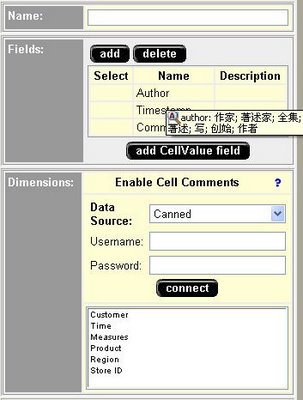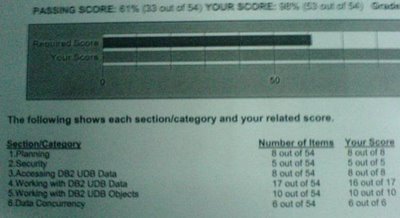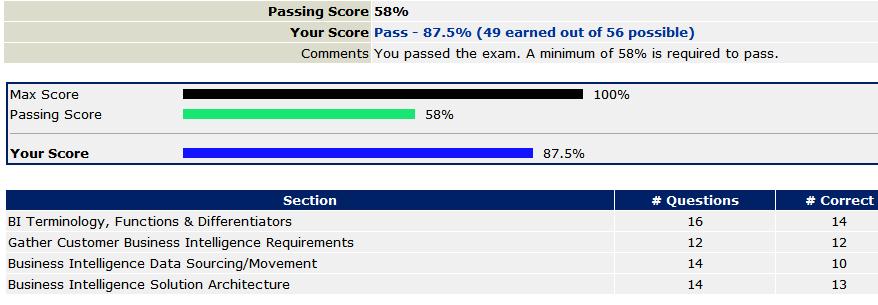Here is an HADR configuration example that I did when preparing for my DBA certification. It has being awhile when I performed these steps, so bear with me if there are any mistakes or errors in the description.
DB2(R) high availability disaster recovery (HADR) is a data replication feature that provides a high availability solution for both partial and complete site failures. HADR protects against data loss by replicating data changes from a source database, called the primary, to a target database, called the standby.
This practice assumes two DB2 instances, named DB2INST1 and DB2INST2 resides in the same physical machine.
For configuring HADR, you will need few pieces of information.
Update DB2 Registry ProfileDB2 Communication Protocol (DB2COMM)
Update Each Instance DBM ConfigurationDB2 TCPIP Listening Port (SVCENAME)
Update Primary DB Archical Logging ConfigurationLog Pages During Index Rebuild (LOGINDEXBUILD)
Index Creation Time (INDEXREC)
Retain Log (LOGRETAIN)
Update Each DB HADR ConfigurationLocal IP Address (HADR_LOCAL_HOST)
Local Service Name/Port (HADR_LOCAL_SVC)
Remote IP Address (HADR_REMOTE_HOST)
Remote Service Name/Port (HADR_REMOTE_SVC)
Remote DB2 Instance Name (HADR_REMOTE_INST)
Synchronization Mode (HADR_SYNCMODE)
For the intent of all purposes, I installed a fresh copy of DB2 ESE version 9 and chooose NOT to create the default DB2 instance. Windows environment is assumed.
Step 1: Create 2 DB2 InstancesOpen up an instance of DB2 Command Window by typing "db2cmd" in Run dialog.
Create Instance 1 by typing "db2icrt DB2INST1"
Create Instance 1 by typing "db2icrt DB2INST2"
Step 2: Configure Instance 1Type the following commands:
SET DB2INSTANCE=DB2INST1
db2set DB2COMM=tcpip
db2 update dbm cfg using SVCENAME 41001
db2start
Note: The TCPIP service port for this instance is 41001
Step 3: Configure Instance 2Type the following commands:
SET DB2INSTANCE=DB2INST2
db2set DB2COMM=tcpip
db2 update dbm cfg using SVCENAME 42001
db2start
Note: The TCPIP service port for this instance is 42001
Step 4: Create the Primary DB in Instance 1Type the following commands:
SET DB2INSTANCE=DB2INST1
db2 create db BANKFRS
db2 update db cfg for BANKFRS using LOGINDEXBUILD on
db2 update db cfg for BANKFRS using INDEXREC RESTART
db2 update db cfg for BANKFRS using LOGRETAIN on
Note: This step will turn the DB into archival logging mode
Step 5: Create a backup of Primary DBType the following commands:
db2 BACKUP DB BANKFRS TO C:\TEMP
Note: This step will backup the BANKFRS db into C:\TEMP
Step 6: Restore the backup BANKFRS as Standby databaseType the following commands:
SET DB2INSTANCE=DB2INST2
db2 RESTORE DB BANKFRS FROM C:\TEMP
Note: This step will restore the database as BANKFRS in the second DB2 instance and place it into roll forward pending state.
Note: If you roll forward the BANKFRS now, you will not be able to initialize it as the standby database.
Step 7: Configure the HADR settings for the Primary DB in DB2INST1Type the following commands:
SET DB2INSTANCE=DB2INST1
db2 update alternate server for database BANKFRS using hostname localhost port 42001
db2 update db cfg for BANKFRS using hadr_local_host localhost
db2 update db cfg for BANKFRS using hadr_local_svc 41005
db2 update db cfg for BANKFRS using hadr_remote_host localhost
db2 update db cfg for BANKFRS using hadr_remote_svc 42005
db2 update db cfg for BANKFRS using hadr_remote_inst DB2INST2
db2 update db cfg for BANKFRS using hadr_syncmode SYNC
db2 update db cfg for BANKFRS using hadr_timeout 120
Note: Primary BANKFRS HADR service port will be 41005.
Note: Standby BANKFRS HADR service port will be 42005.
Warning: You cannot use the Instance TCPIP port (SVCENAME) or next port number (SVCENAME+1) as the HADR service port. This is by design.
Step 7: Configure the HADR settings for the Primary DB in DB2INST1Type the following commands:
SET DB2INSTANCE=DB2INST1
db2 update alternate server for database BANKFRS using hostname localhost port 41001
db2 update db cfg for BANKFRS using hadr_local_host localhost
db2 update db cfg for BANKFRS using hadr_local_svc 42005
db2 update db cfg for BANKFRS using hadr_remote_host localhost
db2 update db cfg for BANKFRS using hadr_remote_svc 41005
db2 update db cfg for BANKFRS using hadr_remote_inst DB2INST1
db2 update db cfg for BANKFRS using hadr_syncmode SYNC
db2 update db cfg for vusing hadr_timeout 120
Note: Primary BANKFRS HADR service port will be 41005.
Note: Standby BANKFRS HADR service port will be 42005.
Warning: You cannot use the Instance TCPIP port (SVCENAME) or next port number (SVCENAME+1) as the HADR service port. This is by design.
Now, you are ready to test the configuration.
Step 8: Start HADR on Standby DB IN DB2INST2SET DB2INSTANCE=DB2INST2
db2 START HADR ON DB BANKFRS AS STANDBY
Step 9: Start HADR on Primary DB IN DB2INST1SET DB2INSTANCE=DB2INST1
db2 START HADR ON DB BANKFRS AS PRIMARY
Step 10: Take over the Primary Role to Standby InstanceSET DB2INSTANCE=DB2INST2
db2 TAKEOVER HADR ON DB BANKFRS
Step 11: Take back the Primary Role from Standby InstanceSET DB2INSTANCE=DB2INST1
db2 TAKEOVER HADR ON DB BANKFRS
Step 12: Stop the HADR service on Primary DBSET DB2INSTANCE=DB2INST1
db2 STOP HADR ON DB BANKFRS
Step 13: Stop the HADR service on Standby DBSET DB2INSTANCE=DB2INST2
db2 deactivate db BANKFRS
db2 STOP HADR ON DN BANKFRS
General Notes:You can invoke the HADR wizard from the DB2 Control Center by right clicking on the specific database and select "High Availability and Disaster Recovery" -> Setup
You can monitor the HADR status on the database by using the database snapshot monitor. "db2 get snapshot for database on BANKFRS"










